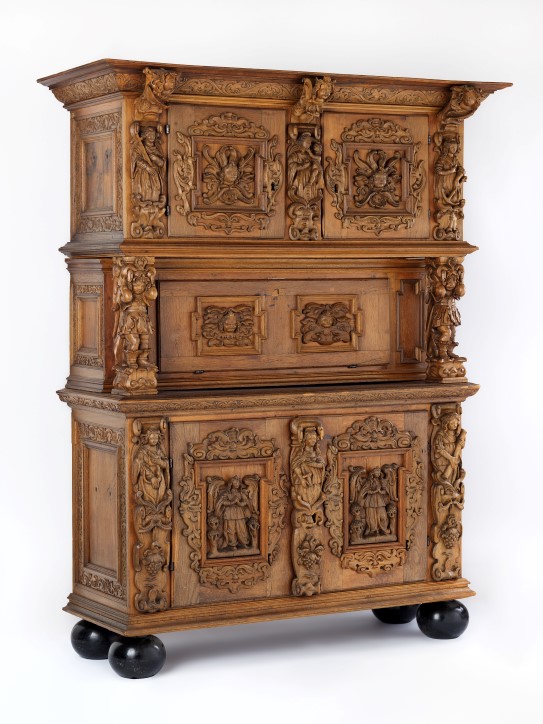Cabinet
Peiter Negelsen
Transcription
Narrator
This richly decorated oak cabinet - has an ornamentation that is a tribute to the Christian virtues - such as faith, hope and love.
Until quite recently, the museum claimed that the Scotsman Anders Smith had made this cabinet, but a research project in Stavanger revealed that it was attributed to the wrong person. Cathrine Lorange, art historian at the National Museum explains:
Cathrine Lorange
And this is very exciting. I have stood in front of this cabinet throughout many years and given tours and talked about how this cabinet was made by the immigrant Scots, as an example of how we got inspiration from abroad, which gave inspiration to Norwegian design life. And then, it turns out that it's actually the other way around, the craftsman was Norwegian, ha ha…
Narrator
And that craftsman was Peiter Negelsen. Admittedly, Negelsen had taken a journeyman's certificate in Holstein in Germany in 1627, before he returned home.
Cathrine Lorange
And he probably returns very inspired by all that he had learned in the German Empire, and becomes an important master of sculpture.
Narrator
He produced many large works, pulpits and cabinets with beautiful figures and decorations, which can almost be read like a book. And we now know that many of these were made by Negelsen.
The museum collaborates widely with other professional institutions to find errors and truths, in an eternal search for answers… But does it really matter if we know who made this particular cabinet?
Cathrine Lorange
It is a bit interesting to reflect on the importance of knowing who made the cupboard. Because in a way, the cupboard is the same all the time. And we can date it with scientific methods and art historical expertise. But there is something about the fact that a cabinet has been made by a human being, and the personal bond with an object and the personal history, and the craftsmanship and the hand that has shaped it, and the eye that has seen it, it creates a completely different accessibility when we can know quite a lot about the person behind a work. In other cases, it may just be a name, but it still opens up a story and perhaps a closeness, which means that the objects can become closer to us.